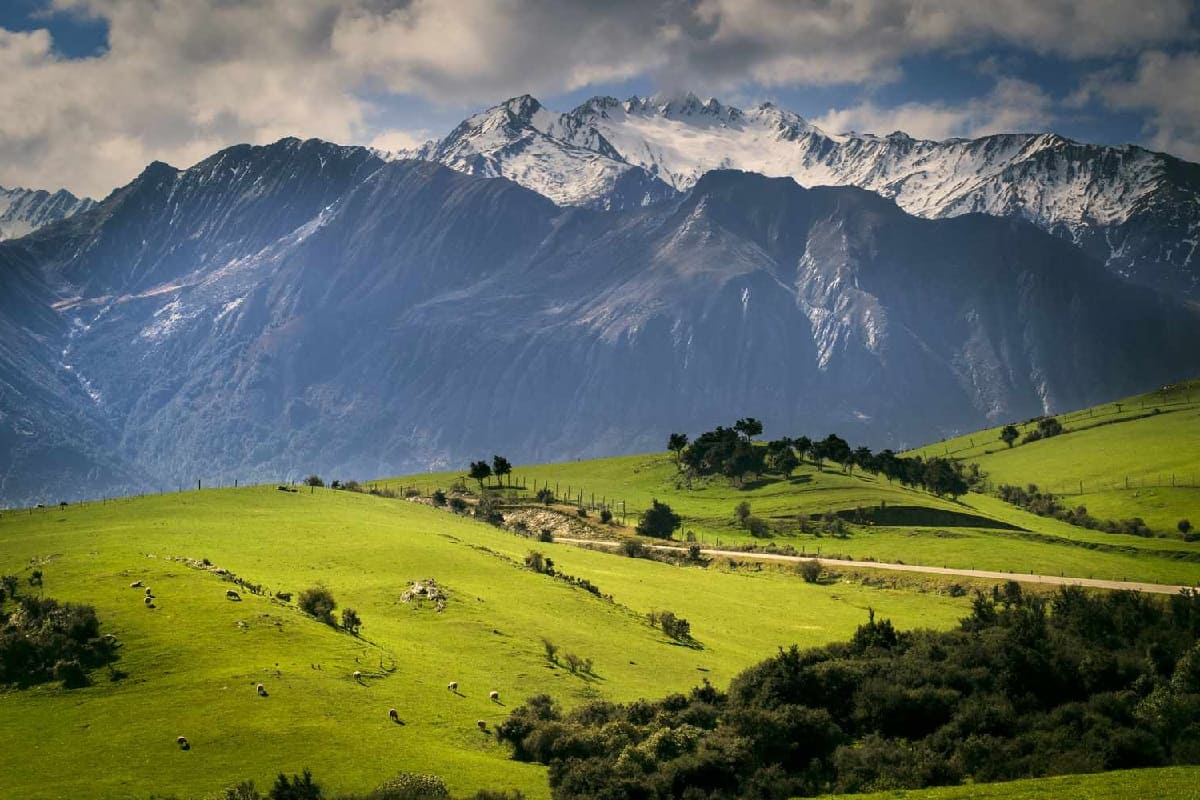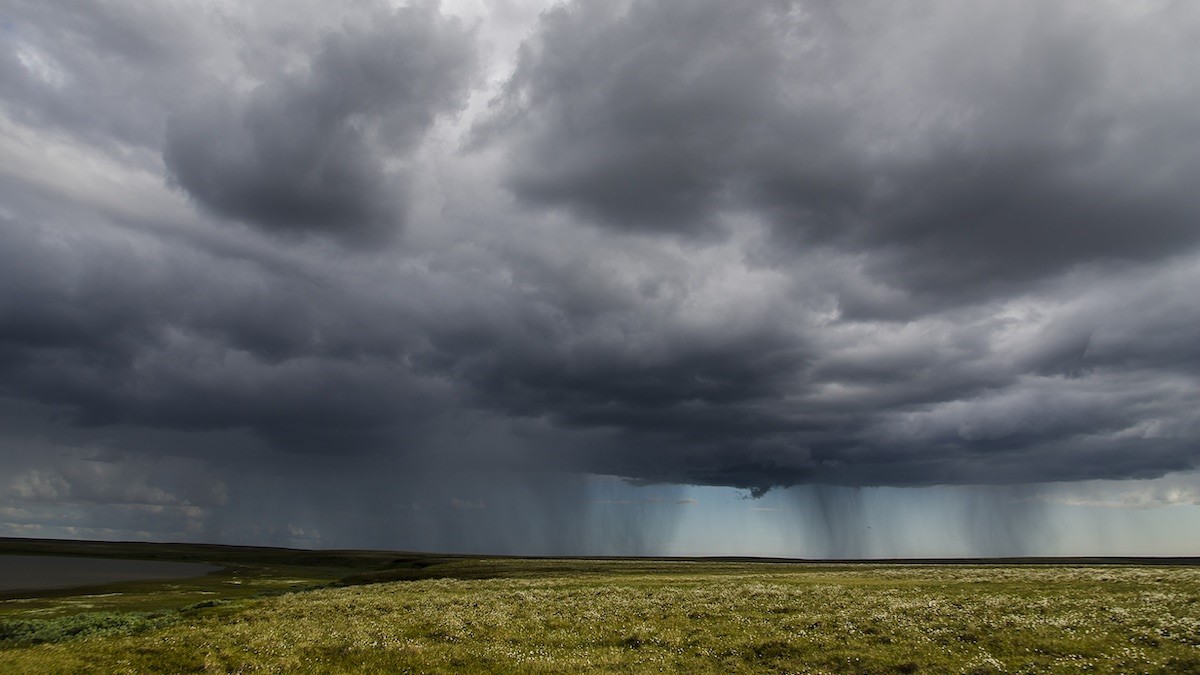Home>Weather and Climate>Average Temperature In New Zealand: Climate Overview And Insights


Weather and Climate
Average Temperature In New Zealand: Climate Overview And Insights
Published: March 1, 2024
Discover the weather and climate of New Zealand with insights on average temperatures and climate overview. Plan your trip with essential weather information.
(Many of the links in this article redirect to a specific reviewed product. Your purchase of these products through affiliate links helps to generate commission for Temperatures.com, at no extra cost. Learn more)
Table of Contents
Introduction
New Zealand, a land of stunning natural beauty and diverse landscapes, is renowned for its unique climate. From the snow-capped peaks of the Southern Alps to the pristine beaches of the North Island, the country's weather patterns are as varied as its geographical features. Understanding the average temperature in New Zealand is essential for both residents and visitors, as it greatly influences daily life, outdoor activities, and agricultural practices.
In this article, we will delve into the intricacies of New Zealand's climate, exploring the factors that contribute to its average temperature and the seasonal variations that shape the country's weather patterns. By gaining insights into the climate zones, temperature fluctuations, and the impact of climate change, readers will develop a comprehensive understanding of New Zealand's temperature dynamics.
Join us on this journey as we unravel the fascinating world of New Zealand's climate, providing valuable insights into the average temperature that defines this captivating island nation.
Read more: Average Temperatures In New Brunswick
New Zealand's Climate Zones
New Zealand's climate is incredibly diverse, encompassing a range of climate zones that contribute to the country's unique weather patterns. These climate zones are influenced by various factors, including the country's geographical location, topography, and proximity to large bodies of water. Understanding these climate zones is crucial for comprehending the average temperature variations across different regions of New Zealand.
The North Island and South Island, the two main landmasses of New Zealand, exhibit distinct climate zones. The North Island features a predominantly maritime climate, characterized by mild temperatures and moderate rainfall. The western regions, such as Auckland and Northland, experience relatively high levels of precipitation, while the eastern areas, including Hawke's Bay and Gisborne, are known for their drier and sunnier conditions. The central plateau, encompassing areas like Taupo and Rotorua, is marked by cooler temperatures due to its higher elevation.
In contrast, the South Island showcases a diverse range of climate zones, owing to its mountainous terrain and varied coastal landscapes. The west coast, including Fiordland and the West Coast region, receives substantial rainfall, contributing to lush rainforests and dramatic fjords. The eastern side of the South Island, particularly Central Otago and Canterbury, experiences a semi-arid climate with hot summers and cold winters. The Southern Alps, which run the length of the South Island, significantly influence the climate, creating a rain shadow effect and contributing to the stark contrast between the eastern and western regions.
Moreover, New Zealand's climate zones are also influenced by the surrounding oceanic conditions. The Tasman Sea to the west and the Pacific Ocean to the east play a pivotal role in shaping the country's weather patterns. The moderating influence of these bodies of water contributes to the relatively mild temperatures experienced across much of New Zealand.
Overall, the diverse climate zones of New Zealand contribute to the country's rich tapestry of weather patterns, offering a wide array of experiences for residents and visitors alike. From the subtropical climate of the Bay of Islands to the alpine conditions of the Southern Alps, New Zealand's climate zones provide a captivating glimpse into the country's meteorological diversity.
Seasonal Temperature Variations
New Zealand's seasonal temperature variations play a significant role in shaping the country's climate and influencing various aspects of daily life. The transition between the distinct seasons – spring, summer, autumn, and winter – brings about noticeable changes in temperature, precipitation, and daylight hours across the different regions of the country.
Spring
As the winter chill gradually gives way to milder conditions, spring breathes new life into New Zealand's landscapes. During this season, temperatures begin to rise, and the flora and fauna awaken from their winter slumber. In the North Island, spring temperatures typically range from 11°C to 18°C, while the South Island experiences slightly cooler temperatures, averaging between 8°C and 16°C. Spring showers are common, especially in the western regions, contributing to the lush greenery that blankets the countryside.
Summer
Summer in New Zealand heralds warm and sunny weather, making it an ideal time for outdoor activities and beach excursions. The North Island experiences average temperatures ranging from 20°C to 25°C, with some areas, such as the Bay of Islands, enjoying even warmer weather. Meanwhile, the South Island basks in temperatures averaging between 18°C and 22°C, creating pleasant conditions for exploring the stunning landscapes. However, the southern regions, including Queenstown and Central Otago, can experience hot days with temperatures exceeding 30°C.
Autumn
As summer transitions into autumn, New Zealand's landscapes undergo a breathtaking transformation, adorned with vibrant hues of red, orange, and gold. The temperatures gradually begin to cool, with the North Island experiencing average temperatures ranging from 13°C to 20°C, while the South Island sees temperatures between 10°C and 17°C. Autumn is also characterized by more settled weather, making it an ideal time for hiking, wine tasting, and enjoying the natural splendor of the country.
Winter
Winter casts a serene and tranquil ambiance across New Zealand, especially in the alpine regions where snow blankets the majestic peaks. The North Island experiences cooler temperatures, averaging between 6°C and 14°C, while the South Island encounters colder conditions, with temperatures ranging from 2°C to 10°C. The southern regions, including Queenstown and Wanaka, transform into winter wonderlands, attracting snow sports enthusiasts and offering a picturesque backdrop for cozy retreats.
In essence, New Zealand's seasonal temperature variations offer a diverse tapestry of weather experiences, each contributing to the country's allure and providing a myriad of opportunities for exploration and enjoyment throughout the year.
Factors Influencing New Zealand's Average Temperature
New Zealand's average temperature is influenced by a myriad of factors, encompassing geographical, oceanic, and atmospheric elements that collectively shape the country's climate. Understanding these influential factors is essential for comprehending the nuances of New Zealand's temperature dynamics and the variations observed across different regions.
Geographical Features
The diverse topography of New Zealand significantly impacts its average temperature. The Southern Alps, stretching across the South Island, create a pronounced rain shadow effect, leading to stark temperature variations between the eastern and western regions. The mountainous terrain also contributes to the formation of microclimates, influencing local temperature patterns. Additionally, the country's proximity to the Antarctic region influences the prevalence of cold southerly winds, particularly during the winter months, impacting temperature fluctuations in the southern regions.
Read more: New York Monthly Average Temperatures Guide
Oceanic Influences
New Zealand's surrounding bodies of water, including the Tasman Sea and the Pacific Ocean, play a pivotal role in moderating the country's temperature. The maritime climate experienced in many regions is attributed to the influence of these oceans, which help regulate temperature extremes. The ocean currents, such as the East Auckland Current and the Tasman Front, contribute to the distribution of heat across the coastal areas, influencing the average temperature experienced along the coastlines.
Atmospheric Circulation
The atmospheric circulation patterns, including the presence of high-pressure systems and prevailing wind directions, significantly impact New Zealand's average temperature. The westerly winds, commonly experienced in the western regions, bring moisture-laden air from the Tasman Sea, leading to higher levels of precipitation and milder temperatures. In contrast, the eastern regions are influenced by dry, cooler winds, contributing to the semi-arid climate observed in areas such as Central Otago and Canterbury.
Elevation
The elevation of various regions within New Zealand contributes to temperature differentials, particularly in alpine areas. Higher elevations, such as those found in the Southern Alps and the Central Plateau, experience cooler temperatures, especially during the winter months. This elevation-induced temperature variation influences the climate zones and contributes to the diversity of New Zealand's average temperature across different altitudes.
Urbanization and Land Use
Urban areas and land use practices can also influence local temperature patterns through the urban heat island effect. Urbanization and the proliferation of built environments can lead to higher temperatures in cities and densely populated areas, impacting the average temperature within these regions.
In essence, the average temperature in New Zealand is shaped by a complex interplay of geographical, oceanic, atmospheric, and human-induced factors, each contributing to the country's rich and diverse climate. By considering these influential elements, one can gain a deeper appreciation for the intricacies of New Zealand's average temperature and the dynamic forces that govern its climatic conditions.
Impact of Climate Change on New Zealand's Temperature
Climate change has emerged as a significant factor influencing New Zealand's temperature patterns, presenting both immediate and long-term implications for the country's climate. The impact of climate change on New Zealand's temperature is a topic of growing concern, as it poses challenges to the nation's ecosystems, agricultural practices, and overall environmental sustainability.
One of the most notable effects of climate change on New Zealand's temperature is the observed increase in average temperatures over the past century. This warming trend has been documented through extensive climate data analysis, revealing a gradual rise in temperatures across various regions of the country. The warming trend is particularly pronounced in the alpine and high-altitude areas, where rising temperatures have led to accelerated glacial retreat and altered snowfall patterns.
Furthermore, climate change has contributed to shifts in precipitation patterns, influencing the distribution of rainfall and snowfall across New Zealand. These changes in precipitation have implications for water resources, agricultural productivity, and the resilience of natural ecosystems. In some regions, altered precipitation patterns have led to periods of drought or intense rainfall, impacting local temperature dynamics and ecological balance.
The coastal regions of New Zealand are also vulnerable to the effects of climate change, particularly in relation to rising sea levels and oceanic temperature changes. The warming of ocean waters can influence coastal climate systems, affecting the temperature and weather patterns experienced in these areas. Additionally, rising sea levels pose risks to low-lying coastal communities, necessitating adaptive measures to mitigate the potential impact on local temperatures and environmental stability.
Moreover, the impact of climate change on New Zealand's temperature extends beyond environmental considerations, encompassing socioeconomic and cultural dimensions. Changes in temperature and weather patterns can affect traditional practices, such as agriculture, fishing, and indigenous land management, leading to adaptations and adjustments within these communities.
Addressing the impact of climate change on New Zealand's temperature requires a multifaceted approach, encompassing mitigation strategies, adaptation measures, and collaborative efforts at local, national, and global levels. By acknowledging the influence of climate change on New Zealand's temperature and its broader implications, the nation can work towards sustainable solutions that safeguard its unique ecosystems, diverse landscapes, and the well-being of its inhabitants.
In summary, the impact of climate change on New Zealand's temperature is a complex and multifaceted issue, necessitating proactive measures to address the challenges posed by shifting climate dynamics. By recognizing the influence of climate change on temperature patterns, New Zealand can strive towards resilience, sustainability, and the preservation of its natural heritage for future generations.
Conclusion
In conclusion, the average temperature in New Zealand is a product of the country's diverse climate zones, seasonal temperature variations, and the complex interplay of influential factors. From the maritime climate of the North Island to the alpine conditions of the South Island, New Zealand's temperature dynamics offer a rich tapestry of weather experiences that shape the nation's landscapes and lifestyles.
The distinct climate zones, influenced by geographical features and oceanic influences, contribute to the remarkable diversity of New Zealand's weather patterns. The seasonal temperature variations, spanning spring, summer, autumn, and winter, offer a spectrum of experiences, each with its unique charm and opportunities for exploration.
Moreover, the influential factors, including geographical features, oceanic influences, atmospheric circulation, elevation, and urbanization, collectively shape New Zealand's average temperature, contributing to the country's rich and diverse climate. Understanding these factors provides valuable insights into the nuances of New Zealand's temperature dynamics and the variations observed across different regions.
Furthermore, the impact of climate change on New Zealand's temperature presents significant challenges and implications for the nation's ecosystems, agricultural practices, and overall environmental sustainability. The observed increase in average temperatures, shifts in precipitation patterns, and coastal vulnerabilities underscore the need for proactive measures to address the influence of climate change on New Zealand's temperature and its broader implications.
By recognizing the multifaceted nature of New Zealand's temperature dynamics and the influence of climate change, the nation can work towards sustainable solutions that safeguard its unique ecosystems, diverse landscapes, and the well-being of its inhabitants. Embracing resilience, adaptation, and collaborative efforts is essential for navigating the evolving climate dynamics and preserving the natural heritage of New Zealand for future generations.
In essence, the average temperature in New Zealand is not merely a meteorological metric but a reflection of the country's natural splendor, cultural richness, and the intricate balance between human and environmental dynamics. By gaining insights into New Zealand's temperature dynamics, we embark on a journey of appreciation for the captivating interplay of nature's forces and the enduring spirit of this remarkable island nation.












